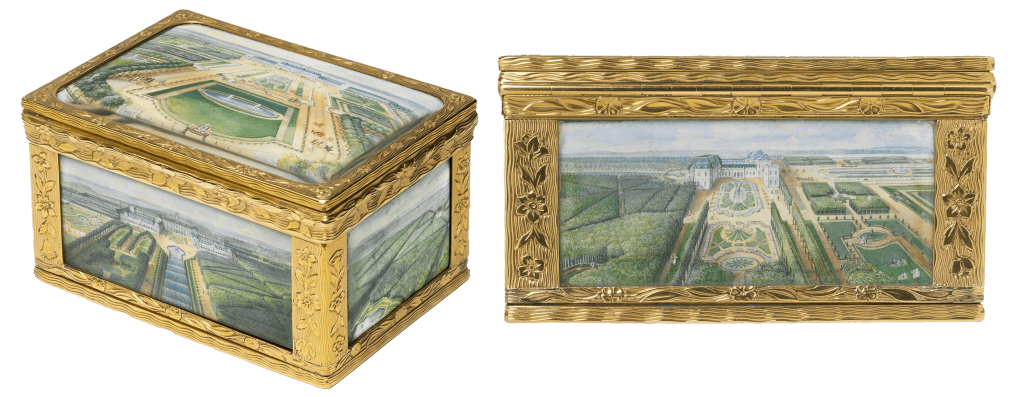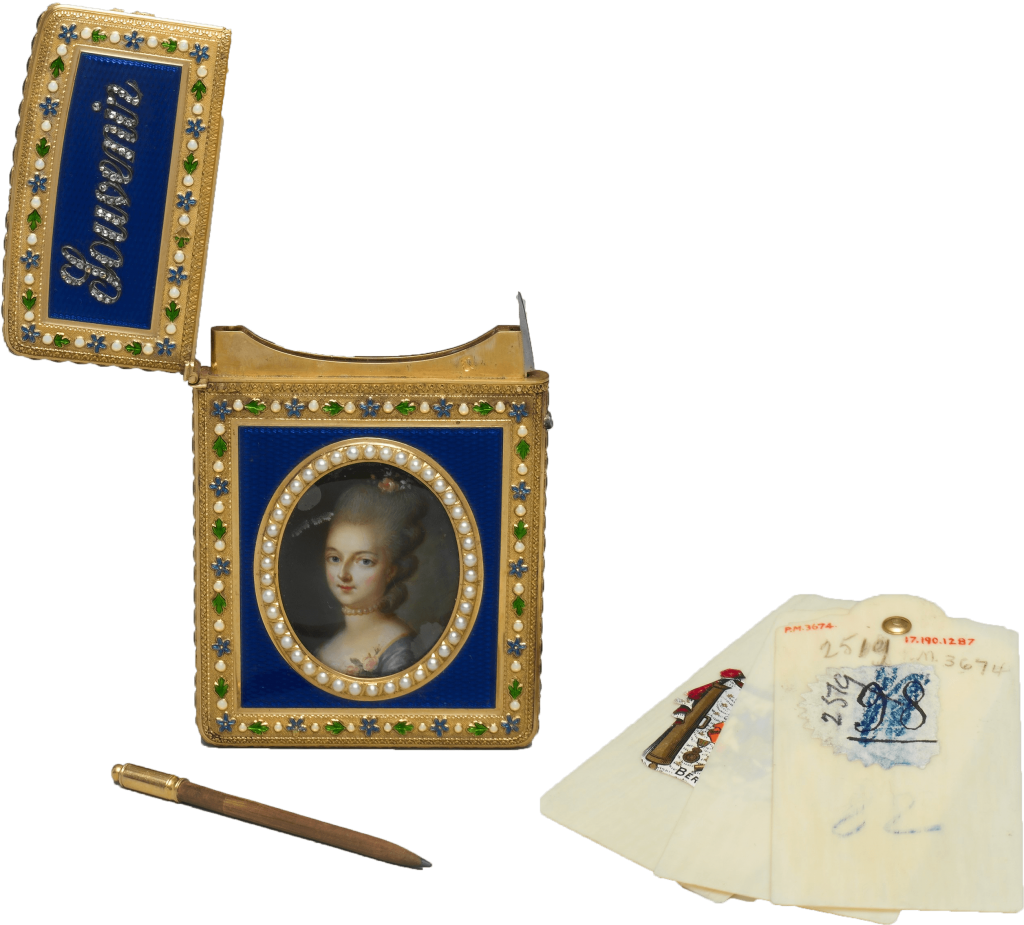Personal luxury items, like snuffboxes, were highly desirable in eighteenth-century France. Snuffboxes, which held a form of powered tobacco called “snuff,” were both functional and fashionable. Meant for pocket use, these small boxes could be made with luxury materials to show off individuality and wealth.. When made of gold, they were airtight with a seamless hinge, so they could be held open at an angle; the owner held the box in one hand while taking a pinch of snuff with the other, which he or she then sniffed. A snuffbox made of gold was designed to be shown off and provoke “envy in men, and in the females love” as one critic pointed out, and could furthermore be adorned with jewels or miniature paintings. The snuff habit, however, was rather dirty and left one’s nose clogged with tobacco, leading the same critic to declare “nor care of cleanliness, nor love of dress, can save their clothes from brick-dust nastiness.”

Snuffbox with six views at Chanteloup, box attributed to Pierre-François Delafons, miniatures attributed to Louis-Nicholas van Blarenberghe, (box 1748/49, miniatures 1767), Metropolitan Museum item number 1976.155.22. Note on the backside of the Château de Chanteloup snuffbox, the carefully crafted hinge is practically hidden from view, blending in with the design of the box seamlessly.
This snuffbox, marked by master-goldsmith Pierre-François Delafons, features six gouache miniature scenes depicting Château de Chanteloupe, attributed to Louis-Nicholas van Blarenberghe. The box is believed to date from 1748-49; the miniatures, however, are signed 1767, indicating that these miniatures replaced ones that fell out of fashion. The scenes of Château de Chanteloupe on this snuffbox are remarkably detailed, distinctly depicting people, animals, gardens, and the residence itself.
Golden boxes were also given as thank you gifts, and would often be brought back to the maker and exchanged for cash value, allowing for the crown to slyly pay someone, and the maker to resell the piece. Snuffboxes were also given as gifts to foreign courts as a sign of the technological and economic strength of France. Gold snuffboxes cost approximately the average annual salary of a doctor or lawyer, but the price could soar even higher if the piece had gem inlays or enamel, which had to be applied by another specialist. The high cost of gold snuffboxes caused for lower-end porcelain models to also be made, which often featured gilt bronze mounts. Snuffboxes fell out of fashion in the 1780s, when the French revolution made flashy displays of wealth less acceptable; snuff, however, continued to be consumed throughout the nineteenth century.
Gold boxes took other forms, too, like the souvenir pictured here. Souvenirs were small, thin gold boxes, often containing a portrait of the owner, ivory pads, and a tiny pencil on which to write the name and contact information of one’s dance partners. The pencil rubbed off of the ivory with the wipe of a finger, allowing the ivory to be reused.


